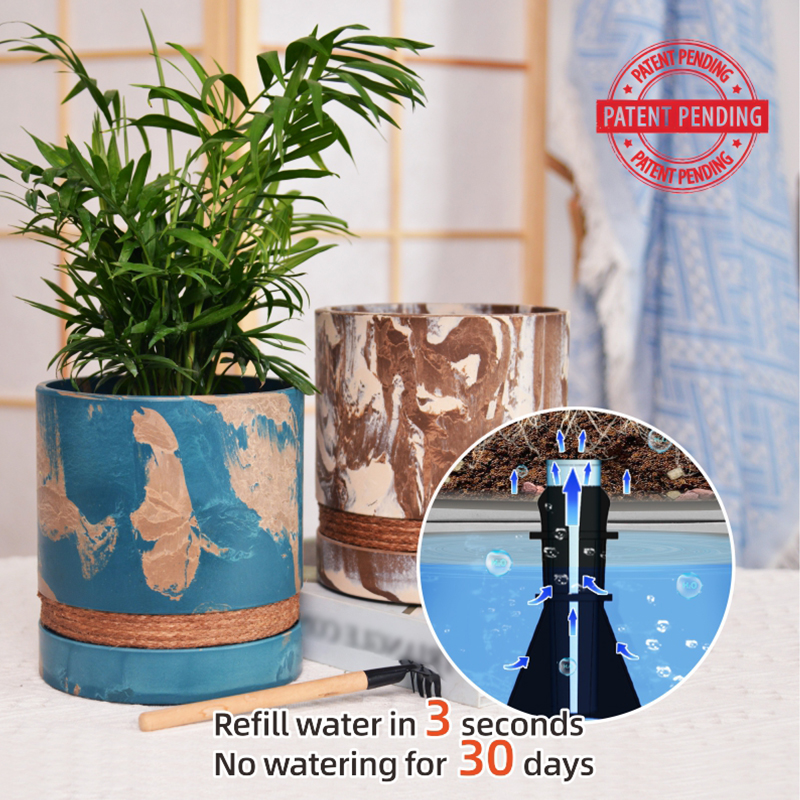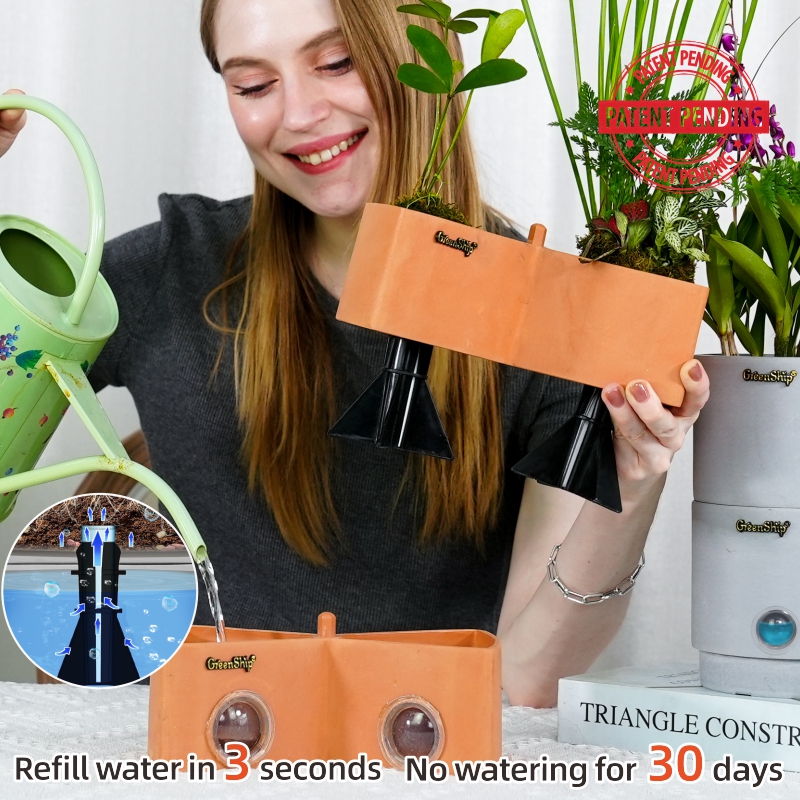Best Containers for Indoor Plants: Choosing the Right Pot for Your Plants’ Health and Aesthetics
Selecting the right container for your indoor plants is crucial for their health, growth, and overall appearance. While there are many types of pots to choose from, self-watering plant pots have become increasingly popular due to their convenience and effectiveness. Here’s a comprehensive guide to the best containers for indoor plants, including the benefits of self-watering pots and other container options.
Why Choose Self-Watering Plant Pots?
Self-watering pots are designed with a built-in water reservoir that provides a consistent supply of moisture to your plants. This system is highly beneficial for both plant health and ease of maintenance.
Benefits of Self-Watering Pots:
- Convenience: Self-watering pots reduce the need for frequent watering. With a water reservoir at the bottom of the pot, these containers automatically provide water to your plants as needed, which can be a game-changer for busy people or those who travel frequently.
- Healthier Plants: Consistent moisture helps prevent both overwatering and underwatering, leading to healthier root growth and less plant stress. Plants have access to the water they need without the risk of soggy soil or drought.
- Prevention of Overwatering: One of the biggest advantages of self-watering pots is that they help prevent root rot caused by overwatering. The pot’s design allows for proper drainage while maintaining moisture, ensuring that your plants don’t sit in excess water.
- Ideal for Busy People: Self-watering pots are especially helpful for individuals with a hectic schedule. They make plant care easier by reducing the frequency of watering and making it less likely that plants will be forgotten or neglected.

Types of Self-Watering Pots:
There are various types of self-watering pots, each with its unique features. Here are three popular options:
- Wicking Pot: This pot uses a wick to draw water from the reservoir up to the soil. The wick pulls moisture into the soil as needed, keeping the plant’s roots hydrated without the risk of overwatering.
- Sub-Irrigation Pot: Sub-irrigation pots feature a tray or reservoir located beneath the pot. Water is added to the tray, and the plant’s roots draw water up through drainage holes at the bottom of the pot, ensuring that the soil remains consistently moist.
- Reservoir Pot: A reservoir pot has an integrated water reservoir within the design of the planter. This system typically includes a water level indicator, so you can easily monitor when it’s time to refill the reservoir.
Factors to Consider When Choosing a Self-Watering Pot:
- Plant Size: Choose a pot that suits the size of your plant. Make sure it provides enough room for the roots to grow, but avoid selecting a pot that is too large, as it may lead to excess moisture in the soil.
- Material: Self-watering pots come in various materials, such as ceramic, plastic, and glass. Each material has its pros and cons:
- Ceramic Pots: Offer an elegant aesthetic and can help regulate soil temperature, but they tend to be heavier.
- Plastic Pots: Lightweight, durable, and often more affordable, plastic pots are a popular choice for indoor plants.
- Glass Pots: While stylish and transparent, glass pots require more attention to ensure proper drainage and water levels.
- Additional Features: Some self-watering pots come with water level indicators, making it easy to monitor moisture levels and avoid overwatering. Others may include wheels for easy movement or decorative finishes to complement your home’s decor.

Other Indoor Plant Containers
While self-watering pots are an excellent option, there are other containers that can be used for indoor plants depending on your preferences and the needs of your plants.
- Ceramic Pots: Ceramic pots are a classic choice that adds a touch of elegance to any room. They are great for regulating soil temperature and are often available in a variety of colors and styles. However, they can be heavy and may require additional drainage holes for optimal plant health.
- Plastic Pots: Plastic pots are lightweight and durable, making them easy to move and maintain. They are affordable and available in a variety of sizes, shapes, and colors. Many plastic pots have built-in drainage holes, ensuring that water doesn’t accumulate at the bottom and cause root rot.
- Hanging Baskets: For plants that trail or cascade, hanging baskets are a fantastic option. These containers allow you to display plants like pothos, ivy, or ferns in vertical spaces, adding greenery without taking up floor space. Hanging baskets are often made of lightweight materials like plastic or wicker.
- Terracotta Pots: Terracotta pots are a popular option for indoor plants due to their natural, rustic appearance. They are breathable, which helps prevent soil from becoming too wet. However, they can dry out faster than other materials, so they may require more frequent watering.
- Wooden Planters: Wooden planters can add a warm, natural touch to your indoor space. These containers often have an organic, rustic aesthetic and can be lined with a plastic liner to prevent water damage. Wood can be heavy and may need to be treated for moisture resistance.
Conclusion
Choosing the best container for your indoor plants depends on your specific needs, the type of plants you are growing, and the aesthetic of your space. Self-watering pots are an excellent choice for those who want to simplify plant care while ensuring their plants remain healthy. Other container options like ceramic, plastic, and hanging baskets are also popular for adding beauty and functionality to your indoor garden. Regardless of the type, the right pot can make a significant difference in the health and longevity of your indoor plants.
16G
By greenship|2024-03-26T01:16:50+00:00March 25, 2024|Categories: HomeOasis Self-Watering System|
18C
By greenship|2024-03-26T01:15:55+00:00March 25, 2024|Categories: HomeOasis Self-Watering System|
18A22
By greenship|2024-03-26T01:16:07+00:00March 25, 2024|Categories: HomeOasis Self-Watering System|



